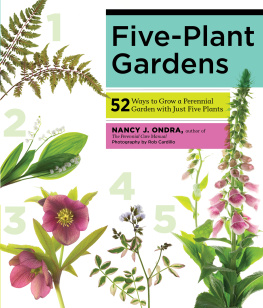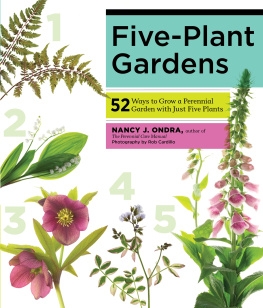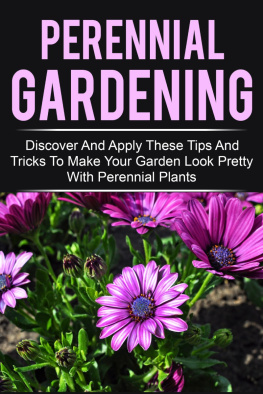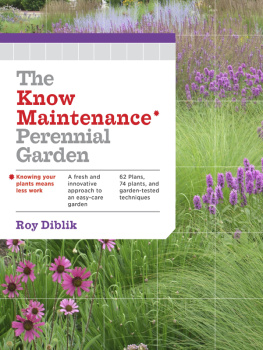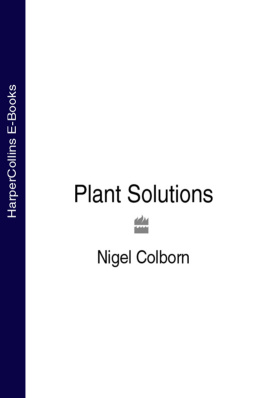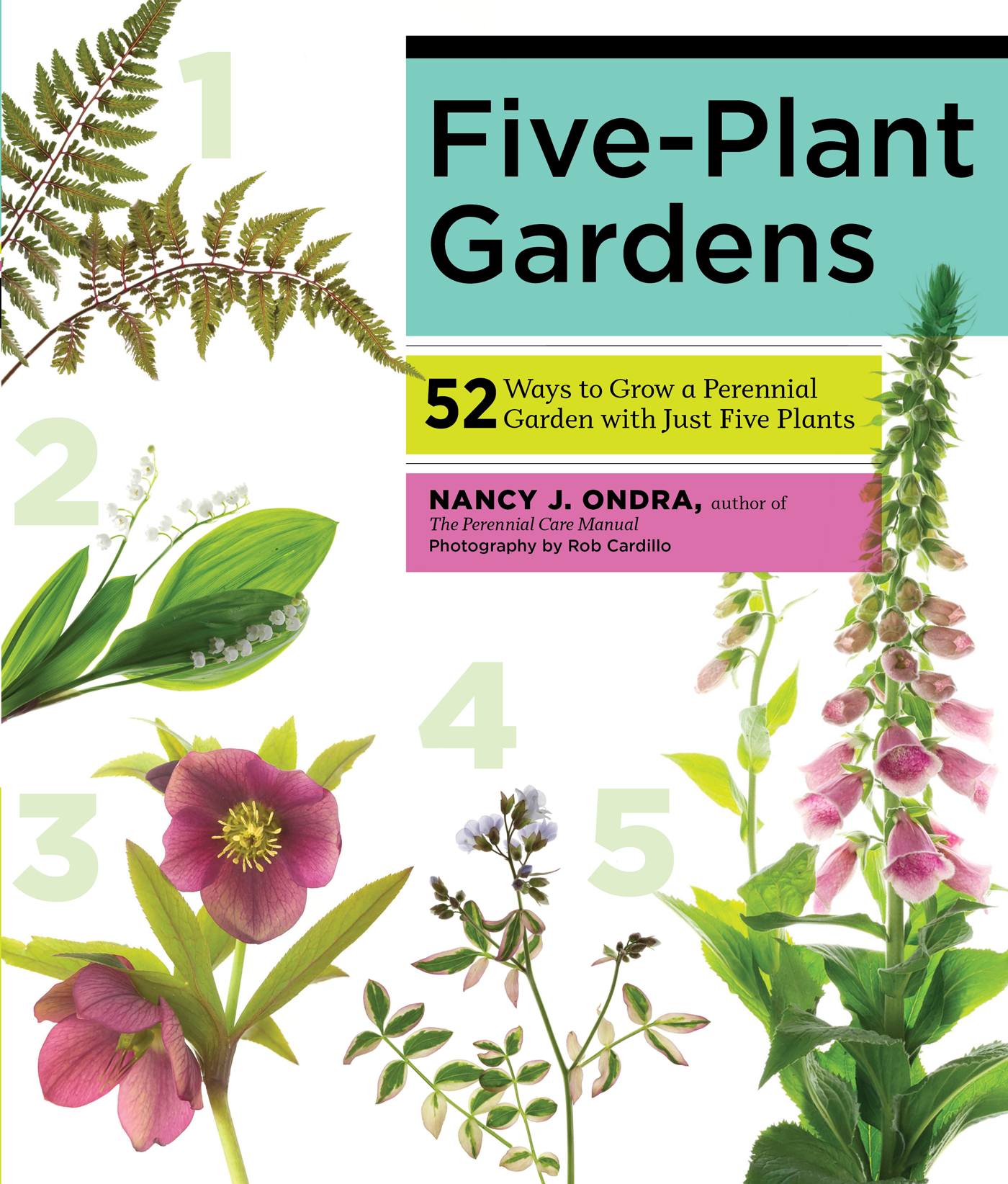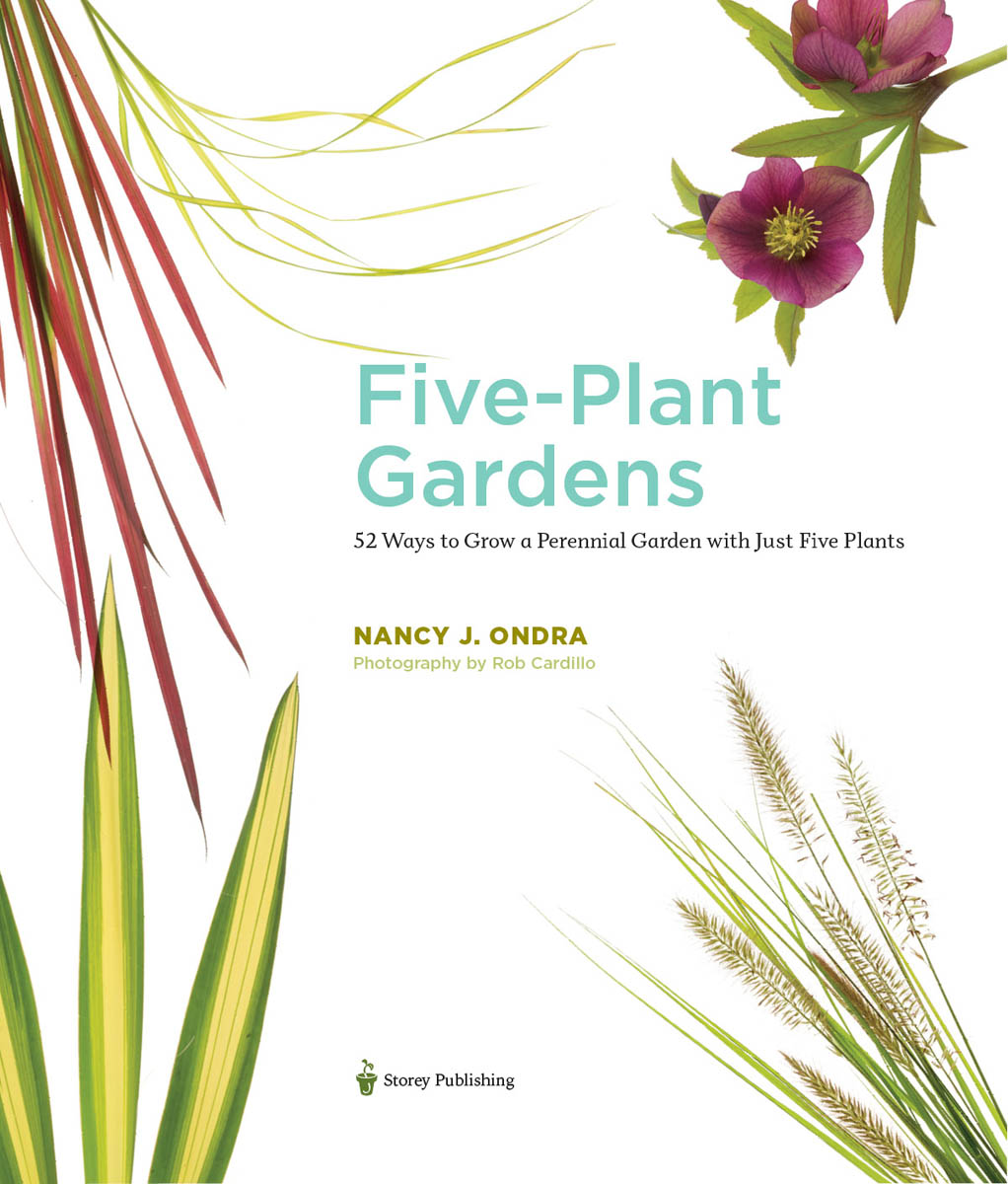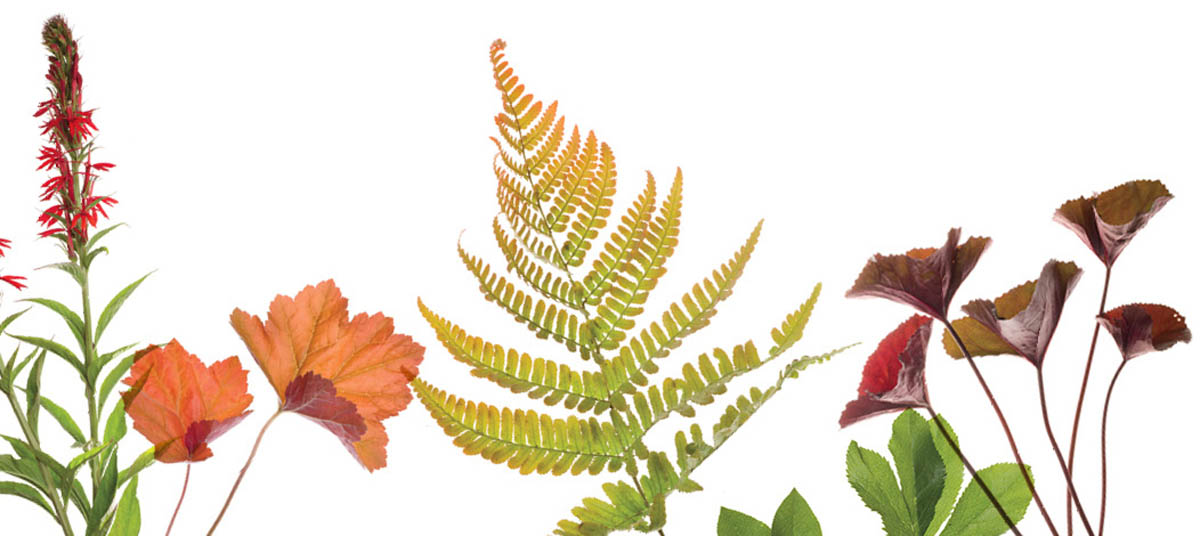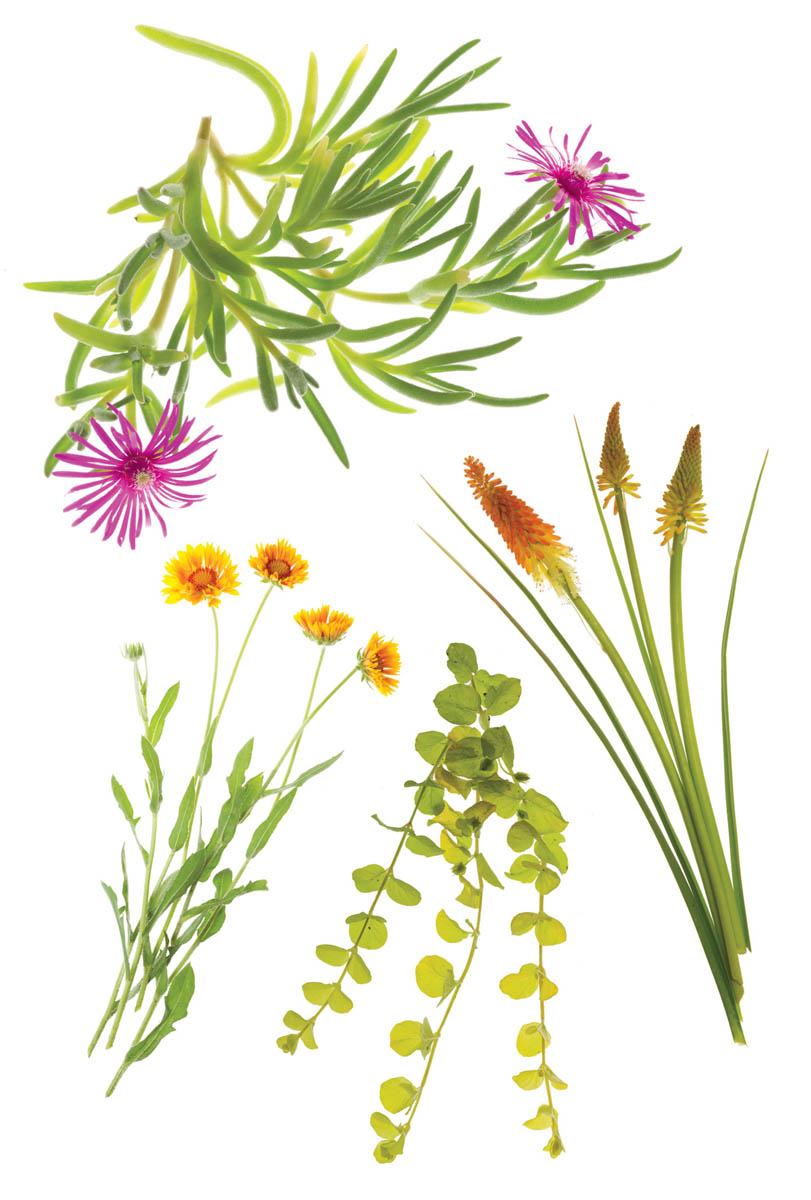Contents
Why Five Plants?
When the gardening bug bites, youre left thinking of beautiful flowers and lush leaves, the thrill of going shopping to find the perfect plants, and the satisfaction of making your yard look great. After youve been gardening for a few years, you develop a sense of which plants look good and grow well together, and you dont need a plant-by-the-numbers plan to get great results. But when youre new to the process, starting with a manageable-sized space, a clear shopping list, and a simple-to-follow planting plan can make the difference between inspiring success and frustrating disappointment.
Enter Five-Plant Gardens. These plans I've created are collections of five different perennials (sometimes in multiple quantities of each plant), carefully chosen to complement each other and grow well together. Its enough variety to give you a good mix of flowers and foliage, heights and shapes, and seasons of interest, but not so much that the collection looks like a jumbled mess. Its also a manageable number of new plants to learn about at one time, as well as a limited amount of money to spend.
The perennials in these plans arent the very newest, cutting-edge releases; instead, theyre time-tested selections that are widely available and reasonably priced, and that have been proven to perform in a variety of climates and growing conditions. If you want to tweak the plans to suit your own taste, Ive suggested alternatives, too, so you dont have to guess at which other plants might work.
Whichever plan and plants you start with, its my hope that youll have great success with your new perennial garden, and that its the start of an enjoyable and rewarding new obsession for you.
Happy planting!
Starting a Perennial Garden from the Ground Up
There are lots of great reasons to start any sort of flower garden: to add beauty to your yard, to enjoy months of colorful flowers, to attract birds and butterflies, to indulge your creative side, and to have a fun reason to get outside for fresh air and exercise. So, why choose to plant a perennial garden? Well, once you know the difference between an annual and a perennial, its easy to see the advantages.
Annual plants last through just one growing season. True annuals die once they complete their life cycle by flowering and producing seeds. Some true annuals include common flowers such as marigolds and zinnias. There are also plants sold as annuals that live for years in very warm climates but die when touched by frost or freezing temperatures, which are a yearly occurrence in most parts of the country. Examples here include begonias, coleus, and bedding geraniums (Pelargonium). Either way, most of us have to start over every year with annuals by sowing new seeds or buying new plants each spring.
Perennial plants sprout from their roots in spring, flower at some point, die back to their roots at the end of the growing season, and then repeat the cycle the following year. Many perennials can live for 3 to 5 years with hardly any attention, and some can last much longer. That means less work and worry on your part, and often less expense, too, because you dont need to deal with seeds or purchase new transplants and find time to get them planted every year.
Thats not to say that annuals are bad, of course: theyre just as pretty as perennials, and they give you the chance to experiment with new kinds and colors each year. But when life gets hectic, you can depend on a perennial garden to do its thing year after year with little help from you and thats a big plus in anyones book!
Exploring Your Options
So, you know you want a perennial garden; now, wheres it going to go? Instead of grabbing a shovel and randomly digging up part of your lawn, consider playing off an existing feature in your yard. How about planting a small bed of perennials by your front door, or perhaps a border along the main path to your home, to add curb appeal and a welcoming touch? A border of perennials also makes a great alternative to boring shrubs in the strip of ground along the front of the house, or along the wall of a garage or shed. Consider surrounding your deck or patio with a planting of lush leaves and bountiful blooms. A garden could also be a good solution for a problem area, such as a hard-to-mow slope or a soggy spot in the yard.
Another option is to first think about what kind of garden you want, and then try to find the perfect spot for it. Maybe youd like a garden filled with flowers in your favorite color, or one thats at its best during your favorite season. If you enjoy watching wild critters in your yard, a garden filled with perennials that attract seed- and bug-eating birds, hummingbirds, or butterflies can be a real delight.
This book includes 52 plans for simple perennial gardens in a variety of shapes and themes, about half for sites that are sunny to partly shady (with about 5 hours or more of direct sun a day) and half for those in partial to full shade (less than 5 hours of direct sun a day). Flip through the plans that suit your site, and youll find dozens of ideas for inspiration.
Smaller Is Smarter
Theres an old saying to the effect of Admire large gardens but plant small ones, and thats excellent advice. When youre excited by the idea of a new garden, its easy to get carried away with grand plans and dig up way too much space. That translates into a big expense in buying enough perennials to fill the garden, and a lot of time spent on planting and caring for the garden, especially the first year.
Starting small makes your garden project way more manageable cost- and time-wise, and the success youll enjoy with a reasonably sized starter garden will give you a more realistic idea of how much more garden you can handle. The plans in this book are large enough to make a good show of color for months but small enough to dig and plant over the course of a weekend and maintain with a few hours a year. As time and money (and available space) allow, you can easily expand an existing small garden or add a new perennial planting in another part of your yard.
Be a Smart Shopper
Each plan in this book includes a shopping list that tells you which perennials to buy and how many of each to get. The suggested quantities are based on plants growing in 2-quart pots (about 5 inches wide and deep) or 1-gallon pots (these are usually 6 to 7 inches wide and deep). Perennials of these sizes are usually reasonably priced and large enough to look nice the first year, though they may not fill the area completely until the second or third year.
To double check the plant quantities before you buy, try arranging the pots according to your chosen plan while youre still at the garden center. You might decide that you need a few more or a few less pots, depending on how large the actual plants are and how much you can afford to spend.

